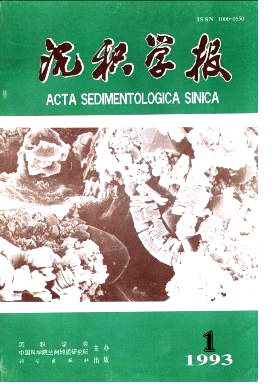Burial Hill Palaeokarst and Its Controlled Reservoir Heterogeneity in Ordovician, Lunnan Region of Tarim Basin
- Received Date: 1991-10-12
- Publish Date: 1993-03-10
Abstract: Lunnan region locates in the southern part of Luntai County, belongs to the first class tectonic unit-Tabei rise belt in Tarim Basin. The top of the deep burial Ordovician carbonate rocks occurs in a NE- SW large burial hill. Ordovician System region only remained Upper Qiulitake Group of Lower Ordovician as a result of long-time surface exposition and intense weathering-denudation in Palaeozoic Era. Therock types are mainly the limestones formed in shallow water carbonite platform, which is one of the important oil-gas layers in this region. Many of the exploration wells have revealed that all of the oil-gas layers are distributed at 0-200m interval of the top of Upper Qiulitake Group. The rock cores of about 2000m long show that the palaeokarst is one of the important factors in controlling the development of reservoir. The palaeokarst is well-developed and characteried by clear vertical zonation at the top of Ordovician. From unconformity interface downward, the palaeokarst is divided into the following three zones: 1) surface karst zone, 2) transitional zone and 3) horizontal underground flow zone. Dissolved furrows, cracks and dolines are developed in zone 1; dissolution is not obvious in zone 2; large horizontal caves with the diameter up to 100m vertically, are developed in zone 3. The third zone feature is the most striking within this region. The overwhelming majority of the caves are filled. According to their features, four types of cave-fill deposits are identified: 1) debris flow, 2) underground river, 3) cave roof collapse and 4) gravitational sliding-dilapidation. The deposits in the horizontal caves are composed by the alternated sediments of debris flow, underground river and cave roof collapse. The filling deposits in the surface dissolved cracks and dolines are resulted from the sediments of debris flow and gravitational sliding-dilapidation. Sporo-pollen analysis in the cave-fill deposits shows that all of the sporoes are formed in Early Carboniferous. It can also be deduced from the analysis of the developing history of the tectonic and sediment of Tarim Basin that the tow- period horizontal caves are formed during the phasic rise of sea level in Early Carboniferous. Along-time stable underground water level is the necessity to the forming of horizontal caves. The destruction and reformation of palaeokarst can improve the porosity and permeability of original limestones. Three karst facies can be divided, which are, in descending order, 1) palaeosurface breccia, 2)cracked cave roof brecoia and facies 3)cave-fill. The breccias and associated deposits are arranged in two common association: lateral restricted (facies l)and lateral persistent(facies 2 and 3). In addition, facies 2, with the porosity of up to 13%, good permeability and the thickness of 5-30m, has the best reservoir property. It represents a cracked cave roof preserved and is the chief oil-gas layer. The reservoirs controlled by palaeokarst reflect intense heterogeneity both laterally and vertically, which is relative to the distribution of the karst breccia facies and associated deposits, and also to the faults as in the region well as their latger on activities.
| Citation: | Guo Jianhua. Burial Hill Palaeokarst and Its Controlled Reservoir Heterogeneity in Ordovician, Lunnan Region of Tarim Basin[J]. Acta Sedimentologica Sinica, 1993, 11(1): 56-64. |






 DownLoad:
DownLoad: